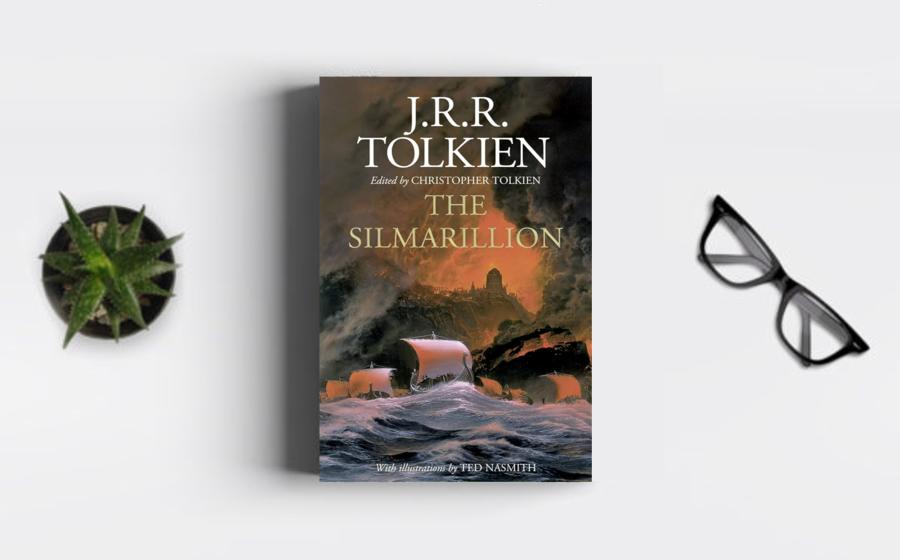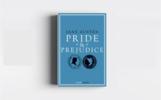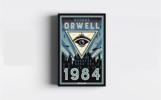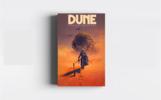In the vast realm of fantasy literature, J.R.R.
Tolkien's "The Silmarillion" stands as a mythopoeic
masterpiece, a foundational work that delves into the
rich tapestry of Middle-earth's history, mythology, and
cosmology. Published posthumously in 1977, this
collection of interconnected stories and narratives
serves as the bedrock upon which Tolkien's legendarium
is built. As we embark on the exploration of "The
Silmarillion," it becomes evident that this magnum opus
is not merely a companion piece to "The Lord of the
Rings"; it is a timeless and profound work that
solidifies Tolkien's status as a literary architect. The
unparalleled depth of lore, the evocative language, and
the sheer imaginative scope of "The Silmarillion" firmly
establish it among the top books of all time.
"The
Silmarillion" opens with the Ainulindale, the Music of
the Ainur, a creation myth that lays the foundation for
the entire legendarium. This mythopoeic approach, the
creation of a comprehensive mythic world, distinguishes
Tolkien's work and sets "The Silmarillion" apart as a
literary achievement of unparalleled scope.
The
Ainulindale introduces readers to the Ainur, divine
beings who participate in the creation of the world
through a symphony of music. The thematic resonances
with real-world mythologies are evident, as Tolkien
draws from his deep knowledge of ancient legends and
languages to construct a mythic framework that feels
both familiar and entirely original.
The
mythopoeic nature of "The Silmarillion" extends beyond
the creation narrative to encompass the entire history
of Middle-earth. Through the interconnected tales of the
Quenta Silmarillion, the Akallabeth, and the Of the
Rings of Power and the Third Age, Tolkien creates a
coherent and immersive mythic cosmos that feels
authentic and lived-in.
Tolkien's
linguistic brilliance shines through every page of "The
Silmarillion." His mastery of languages, including
Quenya and Sindarin, adds a layer of authenticity to the
narrative. The names of characters, places, and
artifacts are not mere labels but linguistic artifacts
that enrich the cultural and historical depth of
Middle-earth.
The richness of Tolkien's prose
contributes to the immersive quality of the
storytelling. The sweeping descriptions of landscapes,
the intricate genealogies, and the lyrical recounting of
epic events showcase the author's ability to paint with
words. Tolkien's prose is not just a medium for
conveying information; it is a means of transporting
readers into a world where every word is a brushstroke
on the canvas of imagination.
The beauty of the
language is evident in the poetic elements woven
throughout "The Silmarillion," from the mournful lament
of the Noldor to the epic battles recounted in verse.
Tolkien's commitment to crafting a linguistic experience
elevates the work beyond a mere narrative; it becomes a
literary symphony where words dance to the rhythms of
his invented languages.
"The
Silmarillion" grapples with complex and universal themes
that resonate with readers across cultures and epochs.
The tension between fate and free will is a recurring
motif, exemplified by the tragic choices made by
characters such as Feanor and Turin. The narrative
explores the consequences of individual actions within
the broader context of a world shaped by destiny.
The theme of power and its corrupting influence is
woven throughout the legendarium. The Silmarils, the One
Ring, and the lust for dominion become catalysts for
tragedy, echoing timeless moral lessons about the perils
of unchecked ambition. The fall of Morgoth, the
rebellion of Sauron, and the downfall of Numenor all
underscore the profound and often destructive impact of
the pursuit of power.
Love and sacrifice are
poignant themes that add emotional depth to the
narrative. The love between Beren and Luthien, the
sacrifices of heroes like Hurin, and the enduring
devotion of characters such as Elrond and Arwen create a
tapestry of human experiences that resonate with readers
on a deeply emotional level.
"The
Silmarillion" introduces readers to a vast array of
characters, each with their own motivations, strengths,
and flaws. From the noble heroism of Beren and Luthien
to the tragic fate of Turin Turambar, Tolkien's
characters are not archetypal but multidimensional
figures whose stories unfold against the backdrop of a
vast and intricate world.
Feanor, with his
burning passion and tragic pride, becomes a complex
figure whose actions shape the destiny of the Elves.
Melkor/Morgoth, the fallen Ainu, embodies the archetype
of the fallen angel whose rebellion against the divine
order leads to his own destruction and the corruption of
Middle-earth.
The portrayal of Elves, Men,
Dwarves, and Ainur adds cultural and racial diversity to
the narrative. Tolkien's nuanced depiction of different
peoples and their interactions reflects his academic
background in philology and anthropology, enriching the
tapestry of Middle-earth with a sense of historical and
cultural authenticity.
Tolkien coined the term "subcreation"
to describe the act of inventing secondary worlds with
their own languages, cultures, and histories. "The
Silmarillion" exemplifies Tolkien's commitment to
subcreation, as Middle-earth is not a backdrop but a
living, breathing world with its own mythology and
cosmogony.
The depth of world-building is evident
in the detailed maps, the creation of multiple
languages, and the extensive appendices that provide
additional historical context. Readers can delve into
the lore of different Elvish realms, explore the rise
and fall of Numenor, and trace the lineage of characters
across generations.
The interconnected nature of
"The Silmarillion" with other works like "The Hobbit"
and "The Lord of the Rings" creates a sense of
continuity and cohesion within Tolkien's legendarium.
Characters and artifacts from "The Silmarillion" make
appearances in later works, reinforcing the sense of a
shared history and destiny across ages.
"The
Silmarillion" has had a profound impact on the landscape
of fantasy literature. Its influence extends beyond the
written word to permeate popular culture, inspiring
subsequent generations of writers, artists, and
creators. The archetypal motifs, the themes of heroism
and tragedy, and the immersive world-building have left
an indelible mark on the fantasy genre.
Tolkien's
legendarium has been adapted into various media, from
film and television to video games and tabletop
role-playing games. The cultural resonance of characters
like Gandalf, Aragorn, and Sauron can be traced back to
their origins in "The Silmarillion." The enduring
popularity of Middle-earth as a fictional setting
attests to the lasting impact of Tolkien's mythopoeic
creation.
"The Silmarillion," it becomes clear that J.R.R. Tolkien's work is a timeless monument of imagination, a literary achievement that transcends the boundaries of time and genre. The mythopoeic brilliance, linguistic craftsmanship, exploration of complex themes and multidimensional characters.






